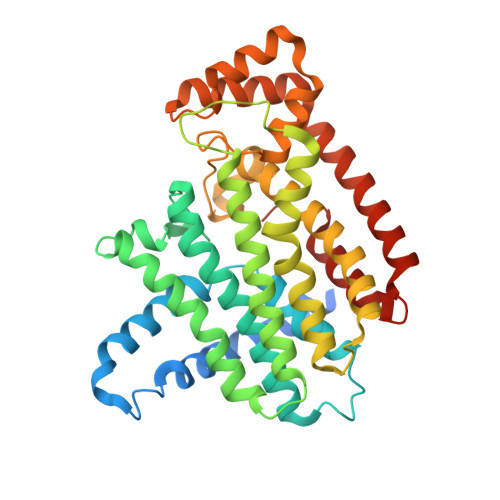Thienopyrimidine Bisphosphonate (ThPBP) Inhibitors of the Human Farnesyl Pyrophosphate Synthase: Optimization and Characterization of the Mode of Inhibition.
Leung, C.Y., Park, J., De Schutter, J.W., Sebag, M., Berghuis, A.M., Tsantrizos, Y.S.(2013) J Med Chem 56: 7939-7950
- PubMed: 23998921
- DOI: https://doi.org/10.1021/jm400946f
- Primary Citation of Related Structures:
4JVJ, 4L2X - PubMed Abstract:
Human farnesyl pyrophosphate synthase (hFPPS) controls the post-translational prenylation of small GTPase proteins that are essential for cell signaling, cell proliferation, and osteoclast-mediated bone resorption. Inhibition of hFPPS is a clinically validated mechanism for the treatment of lytic bone diseases, including osteoporosis and cancer related bone metastases. A new series of thienopyrimidine-based bisphosphonates (ThP-BPs) were identified that inhibit hFPPS with low nanomolar potency. Crystallographic evidence revealed binding of ThP-BP inhibitors in the allylic subpocket of hFPPS. Simultaneous binding of inorganic pyrophosphate in the IPP subpocket leads to conformational closing of the active site cavity. The ThP-BP analogues are significantly less hydrophilic yet exhibit higher affinity for the bone mineral hydroxyapatite than the current N-BP drug risedronic acid. The antiproliferation properties of a potent ThB-BP analogue was assessed in a multiple myeloma cell line and found to be equipotent to the best current N-BP drugs. Consequently, these compounds represent a new structural class of hFPPS inhibitors and a novel scaffold for the development of human therapeutics.
Organizational Affiliation:
Department of Chemistry, McGill University , 801 Sherbrooke Street West, Montreal, Quebec, Canada H3A 0B8.

















